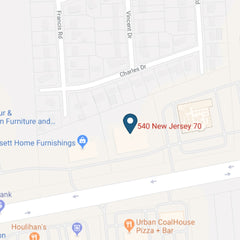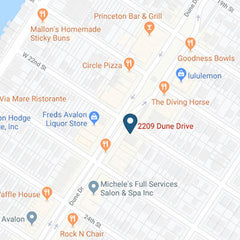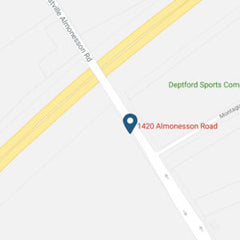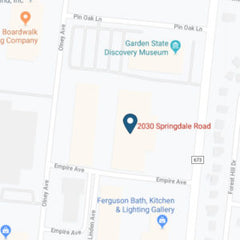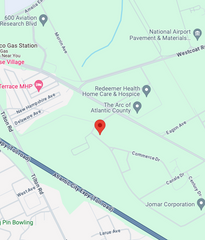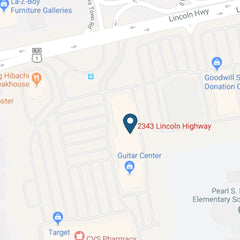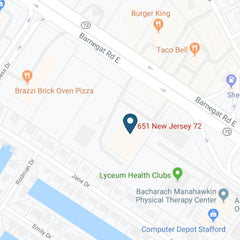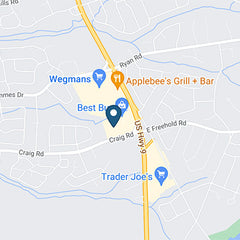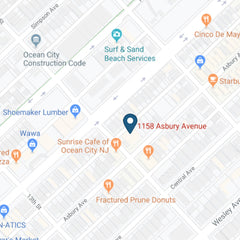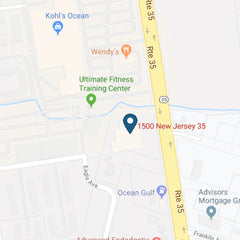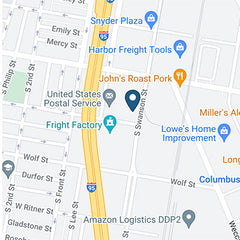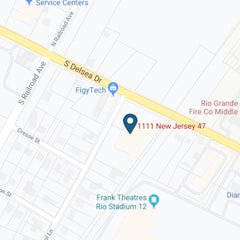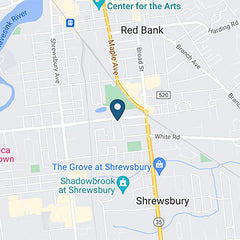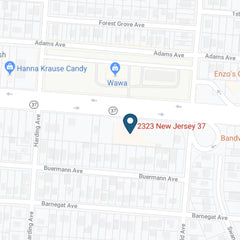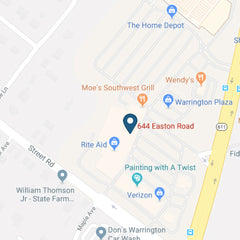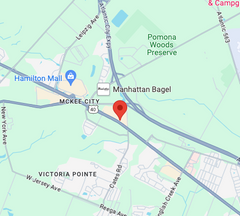So, you've decided to go with wood flooring, but now you're overwhelmed with which hardwood shade and pattern to choose. Out of all the considerations in designing a new space, the choice of which hardwood pattern and shade can be a huge one. It will set the foundation for the total look you're working to achieve. And that's why we're here, to help break down the types, shades and adding some design ideas to help you choose the right combination for you. Let's start and get creative!
Dark Stained Wood Floors
Dark, rich colors look gorgeous and elegant, giving your room an expensive feel. This shade of hardwood is still going strong. There are color options with names like espresso and dark walnut. The only downside to this dark hardwood shade is that it could make your rooms look smaller. Dark colors are known to make things look smaller, even in fashion (that's why women have that favorite little black dress). Additionally, dark wood tends to show every scratch or dent that happens.
Blonde Wood Floors
For years, lighter colored wood floors were seen as outdated and inexpensive. But today, that's no longer the case—it's the total opposite now. Blonde wood gives you that light feel while still giving that classic, timeless feel, too. Also, with this hardwood shade, you can use it for just about any home décor style—the possibilities are endless! You can go for a chic, contemporary look and then later change to a warm, rustic feel but not have to worry about changing your floors! Also, this blonde shade of hardwood makes rooms feel larger and more open—especially if you use large planks, which is the opposite of the dark shade.
The kinds of wood that fall into this shade category are oak, bamboo, maple, white oak, red oak and even ash.
Whitewashed Wood Floors
This whitewashed look has more of a west coast feel, which made it a great go-to for beach homes. But today, this look is starting to spread to the farm-house design style. This whitewashed hardwood shade will make your home feel nice and open, bigger, brighter and more relaxed. What's also great about this shade is that this whitewash purposely shows signs of wear with darker wood peeking out from underneath instead of a smooth white finish, which makes it look better.
Honey Wood Floors
This hardwood shade, just a step darker than the blonde shade, is a warm and rich color. Honey wood floors are still light enough to give you the same benefits as the blonde shade—makes your room feel more open and bigger. But with this tone, it also makes your room feel warm. Since this honey tone has such a natural look to it, it's easy to find. It has a realistic feel to it since it looks like it just came right off the tree. Another benefit of this shade is that it's a classic shade that will never go out of style.
Gray Wood Floors

Years ago, gray wood floors were seen as just a new trend. But that was a long time ago and they've officially become more than just an upcoming, temporary trend. The color gray is a versatile, neutral shade which is a go-to color category in interior design. And since it's in that neutral color family between light and dark, it also helps open up spaces in all sizes, especially small spaces. And to make it even better, gray looks good no matter what size plank you use.
High Variation Wood Floors

Thanks to technology, manufacturers are now able to replicate that natural look of wood, meaning no two actual pieces of wood look exactly the same. This natural look has now become popular. The best combination is the more natural tones mixed together. But if you're feeling bolder, there are combinations with bright colors. It's not as popular as the natural look, but it's definitely a look that will instantly elevate the décor of your home!
Wood Floor Design Ideas
Now that we've broken down the different hardwood shade options, let's get into the wood floor patterns you can incorporate into your home.
Herringbone
A herringbone wood floor pattern is a historically popular, timeless design that's created by alternating hardwood boards in zig-zagging, 90-degree angles. This flooring pattern can give a large room for exceptional elegance and aesthetic appeal, especially since it's been used in castles and palaces for centuries in Europe. That makes it a highly sought after flooring pattern for any space in your home since it literally gives you the royal treatment!
Diagonal/Angled
Diagonal wood flooring patterns are a lot like herringbone and chevron patterns. As the name says, they are laid diagonally and draw focus to the corners of a room, creating the illusion of a larger space. Because diagonal hardwood floors are less common, they're a fantastic way to add a unique element to your home's floors.
Wide Plank

Wide plank wood floor designs are trending right now. Homeowners love them for creating rustic looks, but darker colors also lend well to formal designs. Wide planks also provide more visual interest, since the full wood grain and unique details from the particular species are easily seen.
However, there are some things to consider before choosing wide planks. Avoid using this type in small rooms, as it makes the room appear smaller. Also, wider planks are known for warping and cupping. Rooms with water use and high humidity—such as bathrooms or kitchens—are not best for this hardwood type.
Mixed Width
Similar to wide plank options, a mixed width hardwood floor pattern is great for rustic designs. This flooring type also has a traditional feel, since mixed width has been used historically to utilize all the parts of the tree and save on building costs.
To get more details to help you choose which direction is best for you to lay your hardwood floor, check out our other blog here.
Now that you know the best hardwood shades and wood floor patterns out there, it's time for the fun part—choose which one is perfect for you and go to one of our locations to start shopping!

